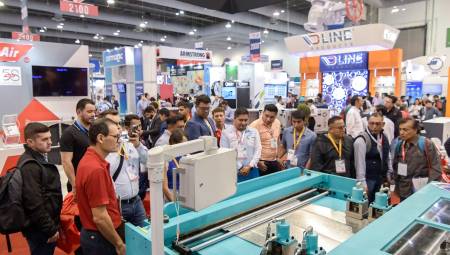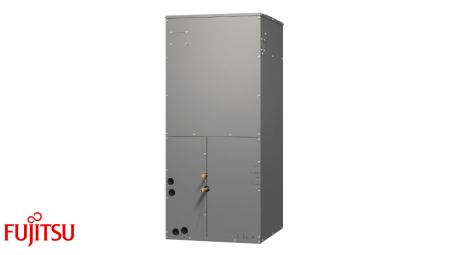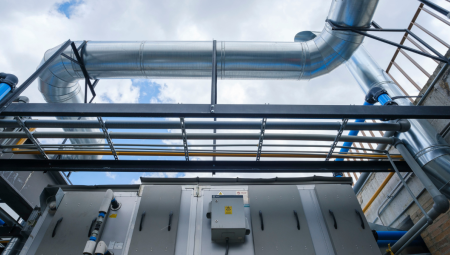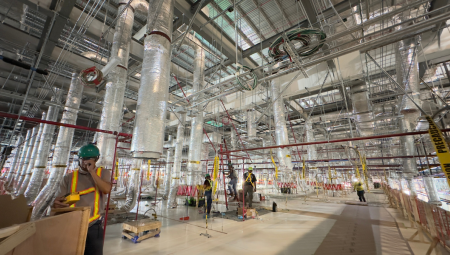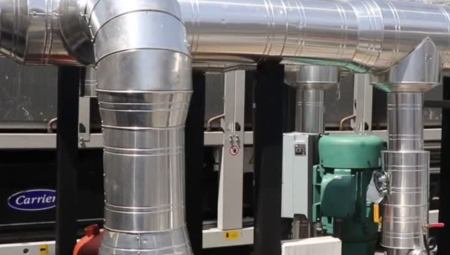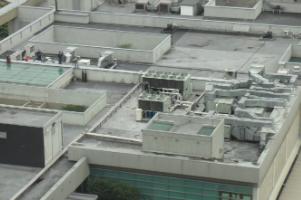 LEED Certification is increasingly being coveted by managers to optimize the operation of their building. A correct design of the air conditioner allows to obtain valuable points to achieve recognition.
by Alfredo Sotolongo*
LEED Certification is increasingly being coveted by managers to optimize the operation of their building. A correct design of the air conditioner allows to obtain valuable points to achieve recognition.
by Alfredo Sotolongo*
Many colleagues have asked me what are the advantages of designing a "green" building and how important it is to get LEED certified. A "green" or LEED certified building carries many benefits, not only for the protection of the environment but to improve the quality of life of the occupants, since it considerably reduces energy consumption and therefore, the cost of operating the building.
As I have mentioned on several occasions, in our countries located between the tropics of Cancer and Capricorn, the air conditioning system is the one that consumes the most electrical energy. I think because of this, depending on the way the air conditioning system is designed, you can maximize the points for LEED accreditation in several of the categories.
Among the categories that allow more points to be obtained in relation to the design of the air conditioning system are: "Energy and Atmosphere", "Quality of the Indoor Environment" and "Innovations and Design Process".
Energy and Atmosphere
This category has two objectives: to increase the operational efficiency of the building and to reduce the impact on the environment. The 17 possible points that can be achieved in this category are obtained by applying equipment and systems that save energy or generate energy without polluting the environment, such as solar energy through photoelectric cells and windmills.
The points obtained for minimizing the impact on the environment are achieved by not using any refrigerant, which is difficult in our climate, or by using refrigerants that have a low effect on the ozone layer and global warming.
Indoor Environment Quality
This category focuses on the creation and maintenance of an indoor environment where air quality allows occupants to feel comfortable and offers them views of the outside allowing sunlight to enter. A maximum of 15 points can be obtained in this category as follows:
1. The quality of the air within the environment.
2. Thermal comfort that allows occupants to adjust air conditioning conditions whenever they wish.
3. Using materials that do not give off gases that have to be eliminated by introducing outside air.
4. Maximizing the entry of sunlight while allowing occupants to enjoy a pleasant view of the outside.
Innovations and design process
One of the 5 points that can be obtained in this category is achieved if the professional who directs the accreditation process has LEED certification. The rest of the 4 points are achieved through equipment and processes that significantly exceed the requirements established by the agencies on which LEED is based, including ASHRAE. Or also by the application of new systems or equipment that are not considered within the requirements of LEED.
Manufacturers that have developed systems and equipment to meet LEED requirements include the following:
- Aaon: It offers high-efficiency air conditioning units that maintain indoor air quality and occupant comfort, controlling humidity and temperature without increasing power consumption.
- Acutherm: It maximizes the number of zones and offers individual control for occupants creating the comfort that LEED pursues.
- Armstrong: It applies the Hartman Loop control system to modulate the volume of all the components of the central cold water plant: chillers, cold water pumps, condensation water pumps and cooling tower fans to maintain optimal kW consumption for each thermal load of the system.
- Cosatron: It controls the particles of the polluting gases of the interior environment that emit furniture, curtains, etc ..., minimizing the amount of ventilation outside air. It contributes to indoor air quality and minimizes the outside air that would have to be introduced into the conditioned area, saving the energy needed to condition the percentage of outdoor air that is removed.
- Smardt: It manufactures an innovative chiller that uses refrigerant that has a low effect on the ozone layer and global warming. In addition, at partial loads they have an extremely low power consumption of kW per ton of cooling. The importance of this high efficiency at partial loads is that all buildings are at partial loads most of the time.
I hope this article clarifies many of the doubts I have been presented with. I would like to insist on what I have always said, that the green building can be built provided that the resulting energy savings justify the additional investment and that it is recovered in a reasonable period of time. If not, it is not built.
If you need more information on any of the topics covered in this column, please contact me at the email [email protected]
*  President of Protec, Inc., he is certified as a professional engineer in Puerto Rico and in the state of Florida; he has more than 40 years of experience in the application and sale of systems and equipment for energy conservation. He is a member of ASME (American Society of Mechanical Engineers), AEE (Association of Energy Engineers), ASHRAE and was president of the Miami chapter of that association.
President of Protec, Inc., he is certified as a professional engineer in Puerto Rico and in the state of Florida; he has more than 40 years of experience in the application and sale of systems and equipment for energy conservation. He is a member of ASME (American Society of Mechanical Engineers), AEE (Association of Energy Engineers), ASHRAE and was president of the Miami chapter of that association.







